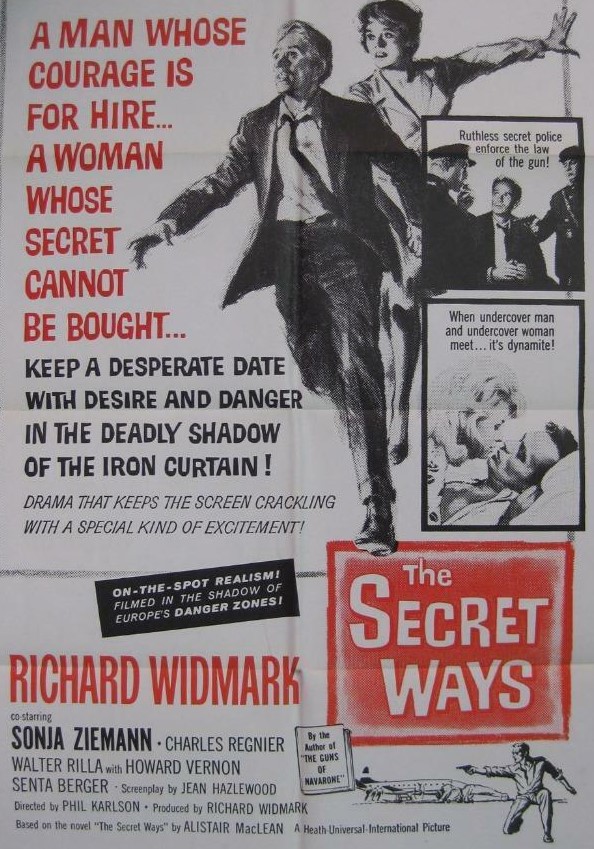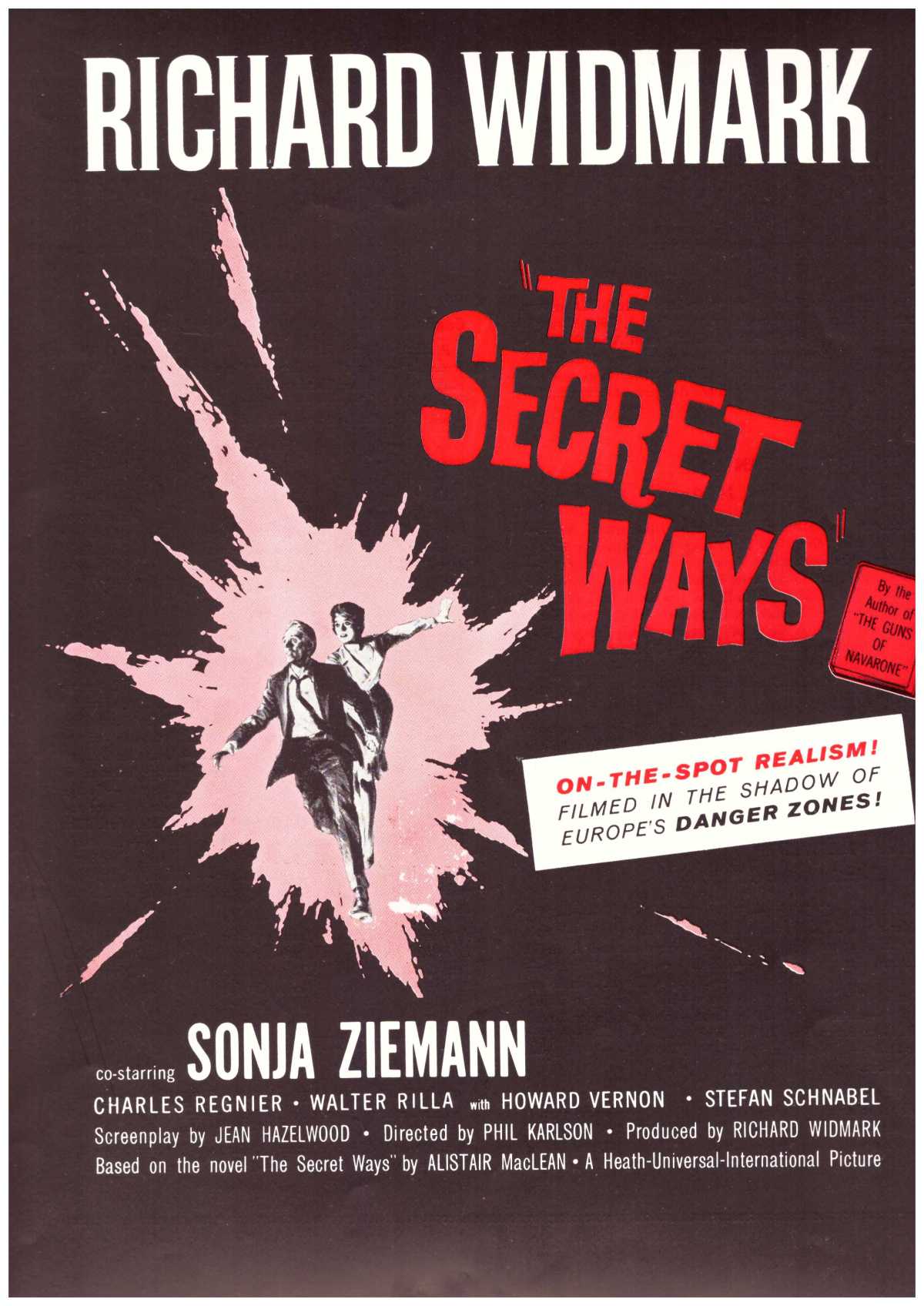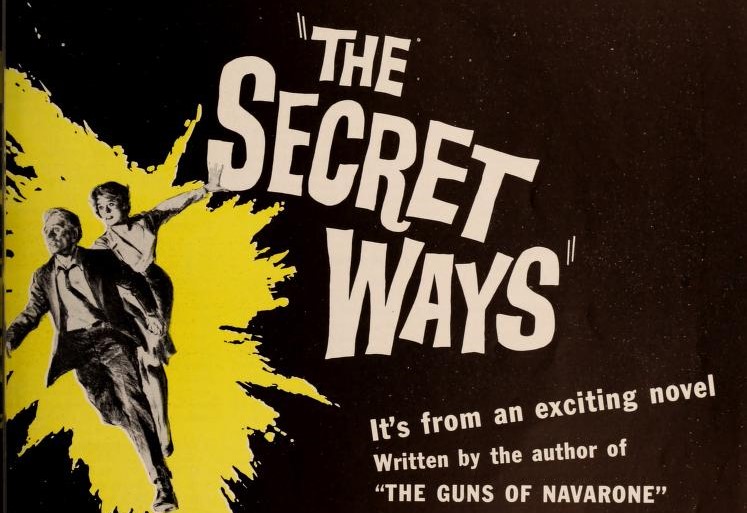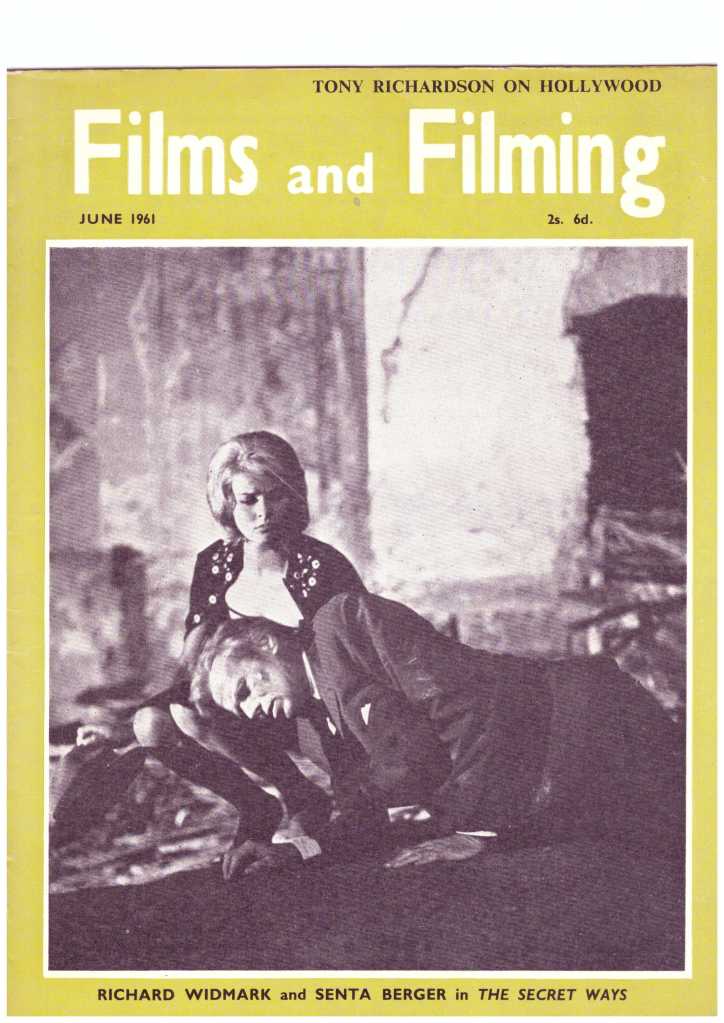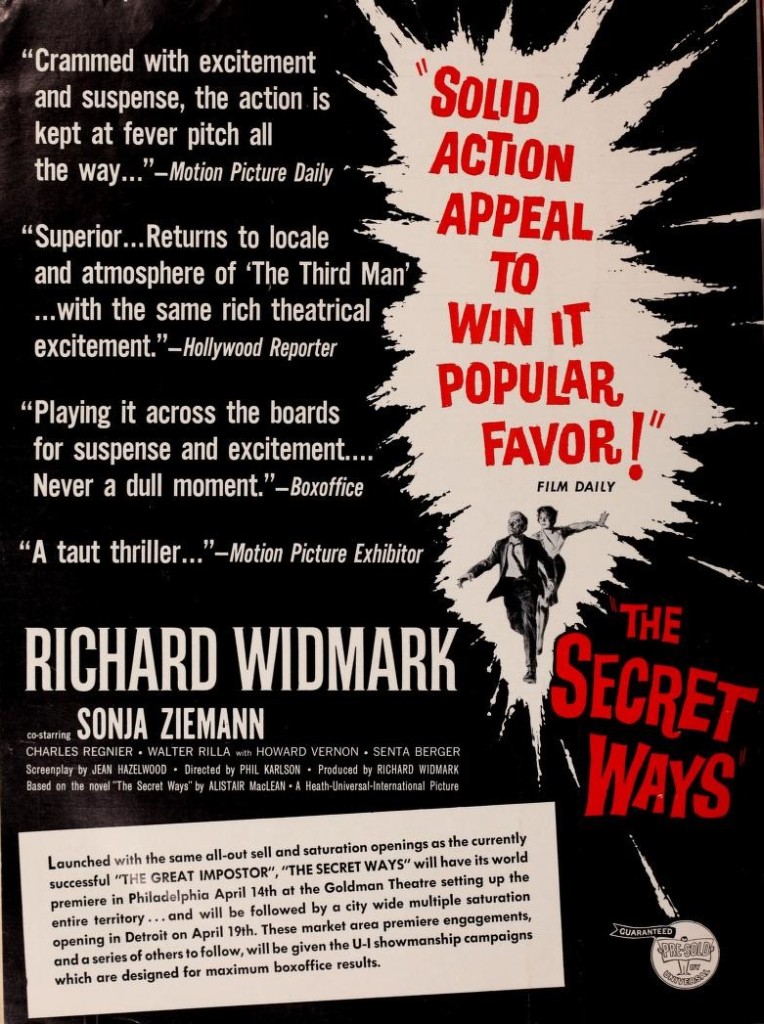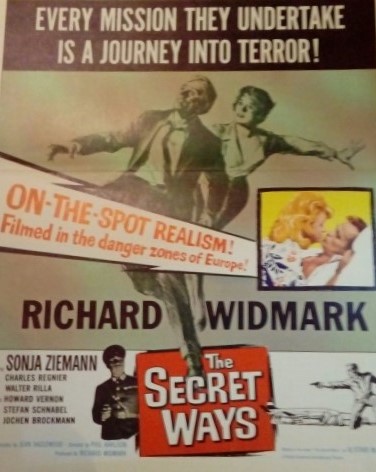Since this is the most popular review on the Blog, I thought I might delve into the background to the picture.
“The reason I made The Secret Ways,” Richard Widmark told British film monthly Films and Filming, “is that I like spy thrillers. I’ve been in this business quite a long time and to survive you have to do all kinds of pictures, you can’t just specialize on just one kind.”
Widmark wasn’t just branching out into a different genre, he was developing a completely new set of skills – turning producer. His Heath Productions had cut its teeth on Time Limit (1957), a Korean war drama in which he starred with a strong supporting line-up in Richard Basehart, Dolores Michaels, Martin Balsam and Rip Torn. For a neophyte producer, Widmark went out on a limb in his choice of director, Karl Malden, better known as an Oscar-winning actor. So he had no problem taking chances. He had bought the property from Warner Brothers at a time when big studios were running shy of doing small pictures.
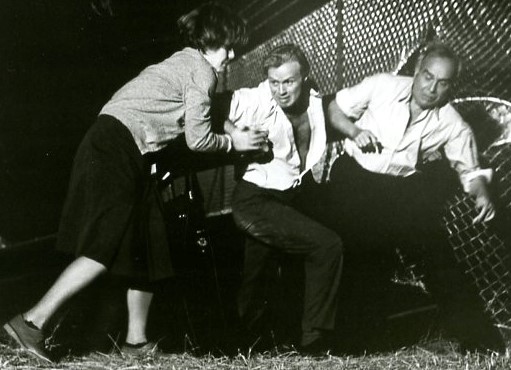
Widmark purchased the rights to The Secret Ways in March, 1959, one month after American publication by Doubleday, with the intention of beginning production before the year was out, putting him on target to produce three films in a year. Also on his production schedule were The Seven File for United Artists and bullfighting drama Wounds of Honor which he would direct but not star. Budget for The Secret Ways was set at $1 million.
“I enjoy production,” Widmark later claimed. “I like to act but over the years I find that I can do more and I enjoy setting things up and seeing them through.” But he could have hardly have been happy with his experience on The Secret Ways. Screenplay issues prevented Widmark meeting his initial start date. Peter Viertel (The Old Man and the Sea, 1958) had first crack followed by Scotsman William Templeton who having written the film adaptation of 1984 in 1956 was expected to understand the Cold War elements. But it was left to Widmark’ s wife Jean Hazelwood to take the screenwriting credit, even though this would be her movie debut and she never made another film.
Finalizing roles proved equally last minute. Female lead Sonja Zieman signed up only a few weeks before production rolled, Senta Berger a couple of weeks after. Obstacles arose once filming finally got underway on August 1, 1960. Rather than importing crews from Britain or America, Widmark chose the budget-conscious idea of utilizing a German-only team. Problems proved as much psychological as a culture clash of working principles.
Widmark recalled that it was “like fighting World War Two all over again – you have the Austrians and the Germans fighting like mad with the English and the Americans, they hated us.” Added to that were language barriers, technical obstacles and cultural difficulties, one example being that the foreign crews were not accustomed to going out into the street and shooting all night for five consecutive weeks. Nor, presumably, were they so keen to be filming so close to the borders. Much of the filming, according to assistant producer Euan Lloyd in a six-minute documentary, was “done directly under the guns of communist guards only yards away.”
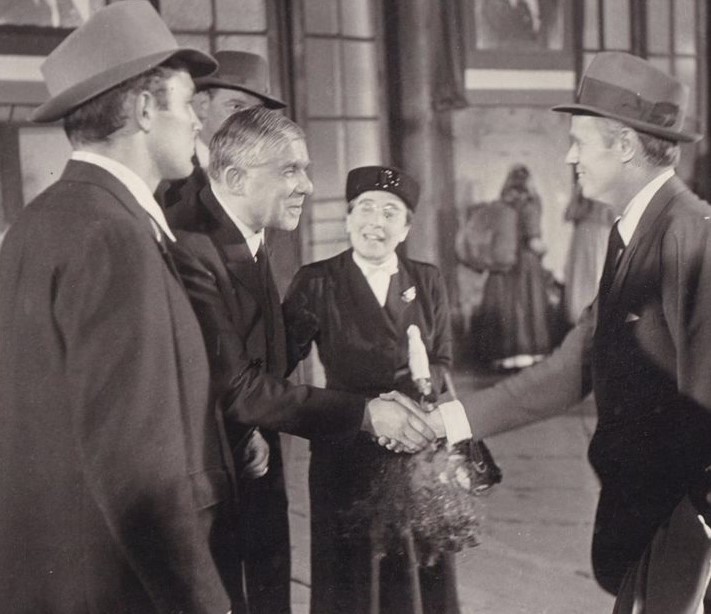
Worse, star and director Phil Karlson were soon at odds, not helped by the fact that Widmark had little regard for directors. “There are to me about eight to ten efficient directors in the world,” he declared, not counting Karlson among that figure. When the director took ill for a week with a virus, rather than shutting down the production, the star took over the directorial reins. Three weeks later, the director quit, over creative differences regarding the ending. Widmark took up his seat again in the directorial chair.
Release was delayed due to Widmark’s other commitments. Once he had completed his role in the film he was away from mid-October shooting John Ford’s Two Rode Together and not able to return to post-production until December
The biggest problem was avoiding making an overt political statement. “I was trying to make an adventure story, a sheer adventure story. But some of it (politics) just creeps in.” Hungarians in Detroit complained the movie did not go far enough in depicting the reign of terror. “They had been in contact with the Hungarian Secret Police,” said Widmark, “had gone through this torture, which seems corny with the dope, the needle and the steam room. But it’s not incredible, it goes on every day of the week there.”
Despite tepid box office, Widmark ploughed ahead with plans to make The Tiger’s Roar from the Jack Davies novel as a vehicle for Trevor Howard. But this and his other two features did not come to fruition and the star did not climb back into the producer’s chair until The Bedford Incident in 1965, which proved his last stab at production.
Working with Widmark inspired Zieman to set up her own production arm, announcing Next Stop Paradise, based on husband Marek Hlasko’s novel, in which she would star. But that did not get off the ground either.
SOURCES: “Widmark to Star Self in Secret Ways,” Hollywood Reporter, March 20, 1959, p18; “Viertel Secret Plottter,” Hollywood Reporter, October 2, 1959, p11; ”Widmark Projects Three Heath Prod’ns Next Year,” Hollywood Reporter, November 11, 1959, p2; “Bill Templeton Plots Secret Ways for U-I,” Hollywood Reporter, December 17, 1959, p1; “Widmark Signs Fem Lead,” Hollywood Reporter, July 11, 1960, p2; “ “Widmark Film Rolls,” Hollywood Reporter, August 1, 1960, p3; “Viennese Actress Set,” Hollywood Reporter, August 9, 1960, p3; “Phil Karlson resumes,” Hollywood Reporter, September 6, 1960, p2; “Karlson Exits Widmark Picture Over Different Endings,” Hollywood Reporter, September 22, 1960, p1; “Widmark Reports,” Hollywood Reporter, October 11, 1960, p3; “Widmark Back to U-I,” Hollywood Reporter, December 15, 1960, p2; “Crew Hazards Under Red Guns As Documentary for U’s Secret Ways,” Variety, March 1, 1961, p19; “New Role for Sonja,” Box Office, May 8, 1961, W2; Richard Widmark, “Creating Without Compromise,” Films and Filming, October 1961, p7-8.
